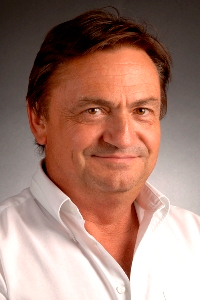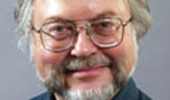Dr. Stefan Estreicher, Professor of Physics at Texas Tech University, will discuss “Phonons and Defects in Semiconductors” on Friday, Oct. 4, at 4:10 p.m. in Walter 245. His talk is part of the Physics and Astronomy Fall 2013 Colloquium series.
“Defects in semiconductors introduce vibrational modes that are distinct from bulk modes as they are spatially localized around the defect,” Estreicher says in his abstract. “Light impurities often produce high-frequency modes visible by Fourier-transform infrared absorption or Raman spectroscopy, while heavy impurities introduce low-frequency modes sometimes visible as phonon sidebands in photoluminescence spectra. Other defects, such as surfaces or interfaces, also exhibit localized modes. Many of these modes can be excited thermally.
“The vibrational lifetimes of such localized modes vary over orders of magnitude and sometimes exhibit unexpectedly large isotope effects. The trapped phonons ultimately decay into combinations of lower-frequency bulk phonons. When heat flows through a material containing defects, phonon trapping at localized modes followed by the decay into bulk phonons is empirically referred to as ‘phonon scattering’. This concept, introduced by Peierls in 1929, treats defects as static scattering centers for bulk phonons and ignores the dynamic properties of defects.
In this talk, I will quantify the concepts of vibrational localization and phonon trapping, discuss the defect- and isotope-dependence of vibrational lifetimes, distinguish between normal and anomalous decay, describe phonon scattering at the atomic level, and discuss the flow of heat at a Si/X interface where X is Ge or C.
Remaining in the Fall 2013 series are held at 4 p.m. on Fridays at 4:10 p.m.
Oct. 11—Dr. Justin Frantz, Assistant Professor of Physics and Astronomy at Ohio University, on “What is the strongly coupled quark-gluon plasma and how does it form?”
Oct. 18—Dr. Paul Debevec, University of Illinois, on “Understanding the Energy Challenge: Science, Technology, Economics and Policy.”
Oct. 25—Dr. Brian McNamara, University of Waterloo, on “Outflows from Supermassive Black Holes.”
Nov. 1—Dr. Hilmi Volkan Demir, of Nanyang Technological University, Singapore and Bilkent University, Turkey, on “Nanocrystal Optoelectronics for Quality Lighting”
Nov. 8—Dr. John Kopchick, Professor of Molecular Biology at Ohio University, on “Growth Hormone, Mini-mice, Football, Dirty Shorts and a New Drug.”
Nov. 15—Duncan Lorimer, of West Virginia University, on “Fast Radio Bursts: a new cosmological course population?”
Nov. 22—Jairo Sinova, of Texas A&M University, on “New Twists in Spintronics: anomalous Hall effect, spin-helix transistors and topological thermoelectrics.”
Dec. 6—Chang Kee Jung, on SUNY Stony Brook, on “Neutrino Oscillations from T2K.”

















Comments